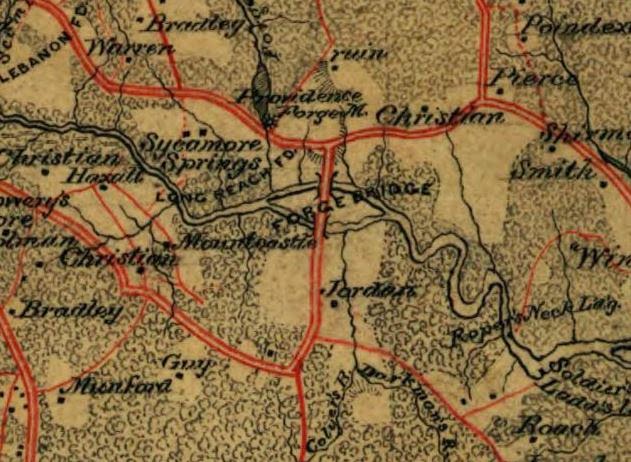A soldier named Lewis T. Steed, was charged with stealing from Lewis Antelotti, on Tuesday last, one decanter of apple brandy, estimated to be worth $40. The evidence of Mr. Antelotti proved that Steed came into his restaurant, near the Central depot, and after inquiring as to the time the Yankees would reach Richmond, remarked that he "wished the Yankees would come and take the d — d old town." He (Antelotti) turned off without making any reply, and soon after Steed left. That evening he was found with the bottle of brandy in his pocket, which Antelotti recognized as his own, when he had him arrested. The accused stated to the Mayor that he was a member of Rodes's division, Battle's brigade, and being in the city he got on a spree. As to the testimony against him, given by Antelotti, he was afraid it was true, for when under the influence of liquor he did not know what he did. Hearing this, and discovering a spirit of candor in his statement, he was ordered by His Honor to proceed to his regiment.
-The Daily Dispatch: February 18, 1864
In the Richmond City Directory of 1860 Lewis Antelotti is listed as owning a restaurant/retail confectionery/saloon on Broad Street between 16th and 17th streets. A Lewis T. Steed is listed as a corporal in Co. H., 6th Alabama Infantry. The 6th Alabama was in the brigade commanded by Robert Emmett Rodes. Company H was raised in Russell County, Alabama. The John B. Gordon Camp Sons of Confederate Veterans has more information on Steed.
Corporal Steed was born in in South Carolina, but as a young man moved to Autauga County, Alabama. He enlisted in Company G, which later became Company H, in May 1861. His service records show that he was taken prisoner on 14 September, 1862 at the Battle of South Mountain during Gen. Lee's Maryland Campaign. He was sent north to Ft. Delaware and was later exchanged at Aikens Landing, Virginia 10 November, 1862. He spent most of that fall sick in the hospital in Richmond, Virginia. On 1 February, 1864, he was promoted to the rank of corporal by order of Col. Lightfoot. He would serve with valour until his capture during a Union breakthrough at Petersburg, Virginia 2 April, 1865. He was taken to the infamous Point Lookout prison camp in Maryland where he was released 30 June, 1865.
So as a word of defense for Cpl. Steed he had just been promoted.
As a further word, here are the casualties of the 6th Alabama up until that time, concentrating only on major engagements:
Seven Pines- 108 men killed and 283 wounded
Antietam- 52 men killed and 104 wounded.
Chancellorsville- 22 men killed and Colonel James N. Lightfoot and 135 other men were wounded.
Gettysburg- 22 killed, 109 wounded and 31 missing








